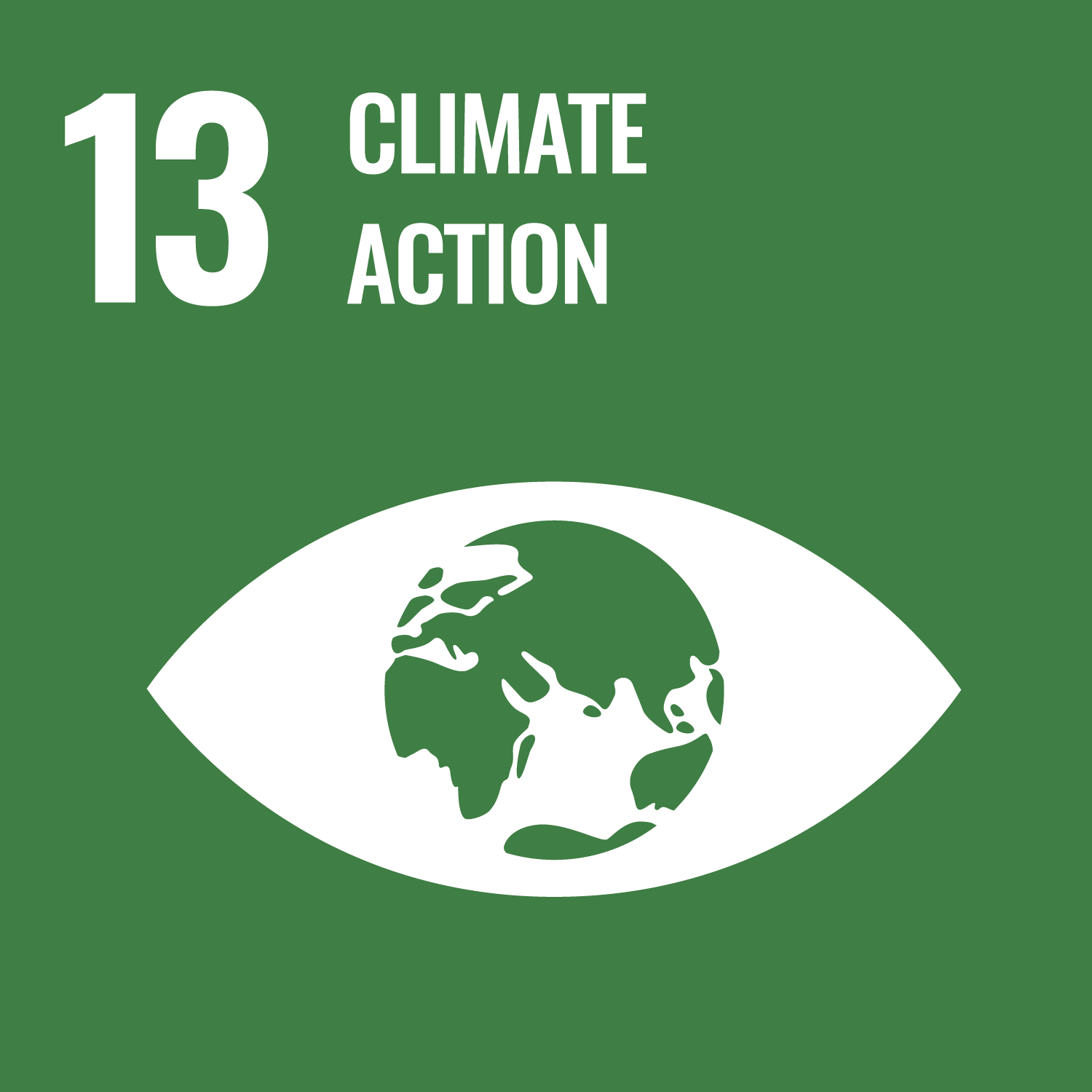High quality carbon credits
When purchasing carbon credits to offset their emissions, large industrial emitters can choose from a wide range of carbon credits, both in terms of the reliability of the underlying projects and price points.
Those not just looking for an administrative fix in their ESG reports, might opt for more expensive, high quality carbon credits. These credits are generated from projects that play a significant role in climate action - buying these credits means investing in operations that has a measurable impact in mitigating GHG emissions.
HIGH QUALITY CARBON CREDITS
Which factors define the credibility of a carbon credit?
SDG9 - Industry, innovation and infrastructure

The goal: 9.4 "Upgrade all industries and infrastructures for sustainability"
The indicator: 9.4.1 "Reduction of CO2 emissions per unit of value added"
Our commitment is based on the fact that, at 2023 average prices and carbon intensity values, the carbon emission advantage of electric powertrains compared to internal combustion vehicles in the EU is an average of 1024 grams of CO2e per euro spent on fuel (even at the average energy intensity of the energy mix). The mitigia service contributes to the creation of additional green investments in electromobility.
SDG11 - Sustainable cities and communities

The goal: 11.6 "Reduce the environmental impact of cities"
The indicator: 11.6.2 "Average levels of fine particulate matter in cities"
Our commitment is that the mitigia service will contribute to the replacement of 150,000 internal combustion vehicles by 2033, with the replaced vehicles expected to be 50-50% petrol and diesel cars. These vehicles typically belong to urban fleets, meaning over 70% of their mileage occurs in urban environments. Therefore, the reduction in particulate emissions supported by mitigia, especially from diesel vehicles, will occur significantly in cities.
SDG12 - Responsible consumption and production

The goal: 12.6 "Encourage companies, especially large and transnational companies, to adopt sustainable practices and integrate sustainability information into their reporting cycle"
The indicator: 12.6.1 "Number of companies publishing sustainability reports"
Our commitment is to incorporate the reporting of GHG emissions from vehicle fleets into the mitigia service, broken down by Scope 1, 2, and 3, and to implement real carbon pricing (providing a carbon price benchmark for carbon footprint assessment even in the absence of a transaction). Our business plan includes providing specific data services to support CSRD reporting for over forty companies as green investors.
SDG13 - Climate action

The goal: 13.2 "Integrate climate change measures into national policies, strategies, and planning"
The indicator: 13.2.2 "Total annual greenhouse gas emissions"
The internal combustion vehicles replaced by fleet electrification have an average emission of 16.5 kg CO2e per 100 km, while the carbon footprint of the battery electric vehicles replacing them depends on the carbon intensity of the electricity used to charge them.
In the EU in 2022, the average carbon intensity of electricity production was 275 g CO2e per kWh, and the average energy consumption of electric cars was 18.8 kWh per 100 km. This means that the average carbon footprint of electric vehicles in the EU is 5.2 kg CO2e per 100 km. Fleet electrification results in a reduction of 11.3 kg CO2e per 100 km, which will increase with the expected continuous decrease in the carbon intensity of EU electricity production ("Fit for 55") over the next 10 years.
Our 10-year business plan includes the carbon market green financing of 150,000 fleet electrification vehicle replacements (ICE > BEV) in EU countries by 2033, resulting in an annual carbon emission reduction of ~267,000 t CO2e in 2033 (an average of ~1.8 t per vehicle per year).
SDG7 - Affordable and clean energy

Projects implemented under the Green Power Charging Network methodology provide this additional co-benefit because they are clearly associated with the distribution of clean, green energy (credits created under the Fleet Electrification methodology do not apply to this, as they can be generated using average carbon intensity "dirty energy"). Emprovia Zrt.'s business plan includes supporting green investments that ensure the input of 293 GWh of green energy annually by 2033.
MRV METHODOLOGY IN USE

The "Monitoring, Reporting, and Verification" (MRV) framework is vital for determining the quality and price of carbon credits. We ensure MRV compatibility in our mitigia service through three levels:
- verifying the carbon credit generation methodology,
- verifying the digital MRV software,
- and auditing emission series.
Our proprietary methodology accurately assesses GHG reductions and complies with carbon market rules. The digital MRV software enhances efficiency, transparency, and accountability, supporting real-time generation and remote verification.
Each emission series is independently audited to ensure MRV compliance, resulting in verified emission reductions (VERs) and maintaining the integrity of the carbon credits issued by mitigia.
ENSURING CCP COMPLIANCE

We have also had our compliance with the Core Carbon Principles pre-verified for each of our proprietary knowledge. Green Cross Hungary Association, acting as an independent carbon market verifier, has issued a preliminary verification.
This means that our methodologies comply with the GHG Protocol and the relevant iCC (international Carbon Cycle) base standards and attestation confirms that the methodologies comply with the spirit of the CCP, however, full compliance with the CCP can only be certified by the Integrity Council. This requires not only the present electromobility emission programmes but also the underlying emission standards issued by the iCC to be pre-verified.
As this involves considerable costs, we plan to carry out this verification by the Integrity Council only after a subsequent capital increase.
COMPLIANCE WITH THE ADDITIONALITY REQUIREMENTS

Among the Integrity Council's Core Carbon Principles, additionality is the most ambiguously defined. We have examined additionality for green investments in industrial electrification through three interpretations:
-
Trivial Interpretation: A project must produce real and permanent carbon reductions to be considered additive. Our carbon credits always meet this standard, as temporary results do not qualify for generation.
-
Substantial contribution: The Hungarian Energy and Public Utilities Regulatory Office defines additionality as activities that influence investment decisions prior to be made by revealing substantial contribution by the underlying project to the original business case that improves the return on investment.
-
Financial Return Approach: This strict interpretation requires that green investments wouldn't occur without carbon market financing. It is assessed using Marginal Abatement Cost Curves, but this method is criticized for not accounting for social costs and project-specific variables.
When developing our methods, we focused primarily on the substantial contribution definition of additionality with the requirement of reinvestment. According to our understanding, the strong commitment that we demand from our issuing clients, to reinvest the revenue earned through carbon market ex-post financing, creates the multiplier effect that is particularly beneficial both for the electrification of the economy and for the fulfilment of the renewable energy share of final energy consumption targets.
In our effort to absolute transparency we are not only sharing the details of the issuance projects, but the pricing method we use too.
We believe that the Offsetting Achivement Ratio is the most reliable tool to calculate the price of a Voluntary Carbon Unit.
The OAR measures the extent to which the carbon credits issued from a green investment project contribute to offsetting emissions as follows:
OAR < 1 - Partial offset
The perceived additional impact on emissions is lower than the number of VCUs issued.
OAR = 1 - Full offset
Crediting is equal to the additional real impact on emissions resulting from the project.
OAR > 1 - Carbon negative
The additional real impact is higher then the volume of the VCUs issued.





